Core i7 Entry
With the i7 processors at the top of every performance comparison, many readers are interested in building a new Core i7 system. However, much of the i7 architecture is unique compared to current computer architectures, with a new socket 1366 and triple-channel DDR3 memory. That means i7 buyers will likely be buying more components than normal for the move to i7. In fact it is not unreasonable to expect a complete new system build, or at least the bulk of a complete system build, when you decide to move up to Core i7.
The question then is what is the absolute minimum you can spend and still get into a decent performing i7 system? In our System Buyers Guide: $1000 to $2000 a balanced i7 system with the cheapest Core i7 CPU managed to squeeze in at just under $2000. In the short time since that guide was published many prices have dropped, new drivers are available, and there are more options available for a Core i7 system. The goal is also a bit more modest in this Core i7 Entry system. The task was to put together a complete i7 system at near bare bones pricing.
In almost every category a lower performing and lower priced option is possible, but it makes little sense to build an i7 system and saddle it with last generation's midrange video card for example. For that reason the video choice was a Radeon 4870 1GB, which many consider the minimum for a serious gaming rig. Where the lower-priced options make just a small difference in performance we chose lower price, but where it really mattered in total system performance the better performing choice was made.
| Core i7 Entry PC | ||
| Hardware | Component | Price |
| Processor | Intel Core i7 920 Socket 1366 (2.66GHz Quad-core, 4x256KB L2, 8MB L3 Cache) |
$295 |
| Cooling | Intel Retail HSF | - |
| Video | MSI R4870-T2D1G Radeon HD 4870 1GB | $205 |
| Motherboard | GIGABYTE GA-EX58-UD3R X58 | $185 |
| Memory | Patriot Viper 3GB (3x1GB) DDR3-1333 (PC3-10666) PVT33G1333ELK - Retail | $70 |
| Hard Drive | Samsung Spinpoint F1 HD103UJ 1TB | $95 |
| Optical Drive | LG BD/HD DVD / 16x DVD+/- RW GGC-H20LK | $105 |
| Audio | On-Board Audio | - |
| Case | COOLER MASTER Centurion 534 RC-534-SKN2-GP ATX Mid-Tower | $50 |
| Power Supply | OCZ StealthXStream OCZ700SXS 700W SLI Ready CrossFire Ready | $70 |
| Display | Acer H213Hbmid 21.5" 5ms HDMI 1080P LCD - Retail | $190 |
| Speakers | Creative Inspire T6100 76W 5.1 Speakers | $70 |
| Input | Microsoft CA9-00001 Black PS/2 Keyboard and Optical USB/PS2 Mouse - OEM | $16 |
| Operating System | Microsoft Vista Home Premium OEM | $99 |
| Bottom Line | $1450 | |
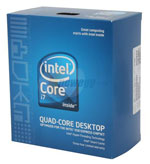 |
The i7 920 is the lowest priced Intel Core i7 you can currently buy. The other two choices are in the $600 to $1000 price range. Don't assume, however, that the 920 is not a powerful processor. The i7 920 is 30% faster in some tests than a Core 2 Quad, and then you find you can also overclock this 2.66GHz CPU to 3.6GHz to 4GHz with careful tweaking and better cooling. You will certainly be very happy with Core i7 base performance, but if you are interested in overclocking you will be even happier with this new CPU.
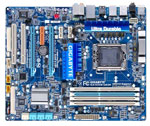 |
The Gigabyte GA-EX58-UD3R has the distinction of being the lowest priced X58 chipset motherboard you can currently buy. Others will join that sub-$200 price point soon to provide more X58 value choices. You probably also noticed that Gigabyte is trying to get as much mileage as possible from their UD3R designation, holding on to a good name as much as possible.
Since this system goal is the lowest priced Core i7 system, we stuck with the retail Intel HSF that comes with the CPU. It works fine with the Core i7 at stock speeds, even though it runs hotter than a similar Intel HSF on Core 2 chips. In the past an Intel retail HSF would be a guarantee of at least midrange overclocking, but the Core i7 runs hotter and you will not get much of an overclock with the Intel HSF. If you plan to overclock you will definitely need a third party HSF, like the Vigor Monsoon III or the Thermalright Ultra-120 eXtreme-1366.
In the Core i7 System in the $1000 to $2000 System Guide, the problems with ATI drivers on Core i7 were discussed. Since then driver releases from ATI are going in the right direction. There is also the price difference, with the capable 4870 1GB some $120 less than the now lower-priced NVIDIA GTX 280. There is also the fact that the Gigabyte GA-EX58-UD3R supports only CrossFire for multiple GPUs.
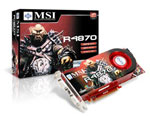 |
Put all those pieces together and the choice for GPU on the i7 Entry system is the Radeon 4870 1 GB. The best value today is the MSI R4870-T2D1G, which is just $205 after a $25 rebate. The best value in HD 4870 1GB cards shifts day-by-day, but you can generally shop for the lowest price on a 4870 1GB card and end up with a good quality card.
 |
Triple-channel memory comes in a 3GB kit (3x1GB) or a 6GB kit (3x2GB). Value dictates the 3GB choice with a great memory package from Patriot. The Viper DDR3-1333 comes as a 3GB kit won't break the bank at $70. For just $70 more, you can upgrade to a 6GB DDR3-1333 kit instead.
Good cases and power supplies are either used forever or they go with the old board on a system upgrade. Generally, it's best to invest in the best case and power supply you can afford. Since this is an Entry i7 we can cut costs on the case and PSU, and with numerous price cuts and rebates available on these components you can still get a lot of value for just a little money.
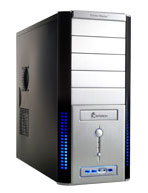 |
The Cooler Master Centurion 534 is a good value no matter how you look at it. It does come in different configurations, and the RC-534-SKN2-GP case is a good choice since it comes with three 120mm fans (front, side, and back) for cooling and installation requires no tools other than a screwdriver for mounting the motherboard. There are also plenty of drive bay options with five external 5.25" bays, one external 3.5", and four internal 3.5". Front USB/Firewire/Audio connectors are also featured. Builders report smooth edges and no sharp pieces to cut your hand during assembly. Even the expansion slots are screwless in this design. Our selection at $50 is black with a brushed aluminum and mesh front, but the case is also available in all black if you prefer at $55.
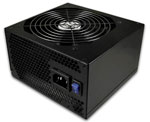 |
The power supply is an excellent value at $70. That $70 buys a 700W OCZ StealthXStream after a $20 rebate. This OCZ PSU specifies an efficiency of greater than 85% with both overload and overvoltage protection. The OCZ StealthXStream 700W should be able to handle whatever you ask of it in powering or overclocking a more basic Core i7 920 system.
 |
Hard drive capacity continues to grow, as you can see in our selection of the Samsung SpinPoint 1TB (1000GB) hard drive at just $95. For less than $100 the value is incredible. While there are differences between hard drives, outside of running benchmarks most people aren't likely to notice the difference in performance between Western Digital, Seagate, Samsung, Hitachi, and other major brands. All are worthy of consideration if the price per gigabyte (or terabyte) is right.
 |
The optical drive for an entry Core i7 system needs to play Blu-ray disks. The flexible LG GGC-H20LK has the ability to read both Blu-ray and HD-DVD format disks. It also can burn DVDs at 16x speed in single or dual-layer formats. It cannot, however, burn 25GB/50GB Blu-ray disks; adding that capability raises the cost to around $200. A BD burner like the LG 6X Blu-ray Burner GGW-H20LK is a good choice if you require a Blu-ray burner.
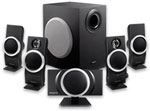 |
After reviewing the current state of onboard audio, we concluded that the onboard solutions are plenty adequate for most of today's computer users. That is why we stuck with the onboard audio on the Gigabyte. Speakers are the 5.1 Creative Inspire T6100 76W system. At $70 the T6100 delivers very good 5.1 surround sound for the price.
 |
The LCD display resolution for the Entry Core i7 system is 1080p full HD (1920x1080). The monitor is one of the new class of 21.5" monitors with a resolution the same as last generation's 24" LCD monitors. The newest monitors use a 16:9 "true HD" ratio instead of last generation's 16:10. The resolution is the same as 24" monitors, but the price is a bargain at $190, which saves at least $100. The Acer H213Hbmid monitor is rated at 5ms and features HDMI inputs for easy hookup to the latest video cards like the MSI Radeon 4870 1GB used in this entry Core i7 system.
By paring components to the items that most affected performance, the bottom line price for a complete Core i7 is cut by more than 25% from our choices of just a few weeks ago. This reduces the price of entry for a complete i7 system to $1450 including a 1080p LCD Monitor, keyboard/mouse, 5.1 speakers, Blu-ray player, 1TB drive, Radeon 4870 1GB graphics, and Windows Vista OS. Performance of this i7 Entry system is definitely in the high-end class, although we will be extending that performance even further in our builds of the Core i7 Overclocking System, and Core i7 Dream system.










106 Comments
View All Comments
Wesley Fink - Thursday, February 5, 2009 - link
The $1000 to $2000 Guide was published 1/12/2009. At that point the best ATI drivers with the Core i7 were a special beta set of 8.12 drivers. On 1/29/2009 ATI released the 9.1 drivers, which are much better with the ATI cards on the Core i7 than earlier drivers.Our issues before were the ATI drivers and not the cards. We explained in today's guide that the ATI drivers were headed in the right direction and we could no longer ignore the better value of the 4870 1GB.
cajones - Thursday, February 5, 2009 - link
So three weeks ago in the $1000-$2000 buyers guide, it was stated to stay away from the ATI cards on X58 systems due to problems. So last night I bought a system with a Nvidia GTX 260 (55nm). Now I see the board of choice with X58 in this guide is the 4870! What changed?Gary Key - Thursday, February 5, 2009 - link
I run the GTX260 216 in my personal systems even though I have a couple of HD 4870s laying on the floor right now that I purchased for our Phenom II comparison articles. If it were not for the recent price drop and improvement in drivers, I would not have even considered the HD 4870 1GB as an option. However, all of us on the staff agree it must be seriously considered now. At the same time, we all agree the GTX260 216 is still a great card, just the cost/benefits ratio has changed significantly this last week. The short story is that you cannot go wrong with either card. :)JarredWalton - Thursday, February 5, 2009 - link
Newer drivers have helped, but honestly you don't have to feel bad about the GTX 260 - it's really something of a toss-up. I have a 4870X2, but honestly I wish I had waiting for the GTX 295 instead. CrossFire still doesn't live up to its potential in games more often than not, and without profiles you're stuck waiting for hacks or new drivers - usually 2-3 months after a game is released, unless it's a major title like Far Cry 2. Funny enough, Fallout 3 seems a major title and it still isn't properly CF enabled.shatteredstone - Thursday, February 5, 2009 - link
You mention that the ASUS P6T6 Revolution (btw, there is a typo in the article (P5T6)) would be the optimal board for Triple-SLI. As somebody who is seriously considering going that route in the near future, I will have to disagree.With three two-slot graphics cards, you will be constrained to using onboard-audio -- all 6 slots are used/unusable, and there is no 1-lane PCIe slot to accomodate the audio solution. The Asus II Rampage Extreme supports triple-SLI as well, but actually offers such a slot (it comes with their custom X-Fi, but you can use a Titanium or the recommended card here as well -- although you may have to remove 3-4 fins from one of the passive chipset coolers; if you are going to go with watercooling, this is naturally not a problem).
Furthermore, "fastest triple-SLI setup possible" should be taken with a grain of salt. It is true that the 3 PCIe slots will all be x16, but that does not necessarily make this the fastest possible solution. Two of those three slots will terminate in the NF200, which will combine those 32 lanes to 16 which can actually reach the CPU (and therefore main memory); furthermore, only the communication between the two cards terminating in the nf200 will actually be able to communicate with eachother at x16 bandwidth; connectivity with the third card will still be constrained by the single x16-connection from the NF200 to the X58.
In essence this means that this setup will only really have benefits if your application is constrained by two of the three cards talking to eachother. Available bandwidth to memory remains about the same (assuming you actually utilize the cards in parallel, otherwise you really don't need three of em on there anyway). I would also not be surprised if the NF200 introduces some latency into the whole thing, and I would be thoroughly surprised if you could see the difference in today's GPU-killer games (Crysis, say).
One other nitpick would be the choice of Vista Ultimate OEM instead of Vista Ultimate FPP. Since this is the dream system, it may see a lot of tinkering over the years; I am not 100% current on the US-American license terms for Vista Ultimate, though from what I understand, your OEM version will be tied to that one computer (or whatever Microsoft may deem that to mean), while you can legally transfer the FPP from one computer to another (though you might have to call them to get it activated, anyway).
One other nitpick : in the article, you link to the p6t6 on newegg (as well as one or two other things). I did not look at the link before opening it in the background, so it was quite counterintuitive to find it bringin me to NewEgg instead of a review or content on Anandtech (especially since most of the other components are /not/ linked that way, and there is no indication of this link actually just directing you to a store).
Thanks for the guide; My dream system is close (currently thinking of the rampage ii extreme instead of the p6t6, even though I really couldn't care less about those onboard buttons and LEDs; probably some higher speed memory (if it is at all available; the nice-looking ocz blade 2kmhz/cl7 kits look lovely on paper but probably will never ever reach the retail channel), water cooling for most of this stuff (been meaning to play with that for a while), gtx285 instead of 295 (the memory does it for me), and some as-yet undecided storage decisions.
Gary Key - Thursday, February 5, 2009 - link
If you want to run triple SLI and retain a half slot (without mods), then the Rampage Extreme II is a better choice or the upcoming EVGA Classified. Personally I would never run triple SLI for any reason except trying to get a good 3DMark. Even then you would need LN2 and a hand picked i7 from Intel to have a possibility in being near the top of the Orb. 3 way-SLI is just not worth the hassle and cost, same goes for tri-Crossfire.I suggested this board to Wes since it is now rock solid. I prefer workstation level quality in my main home system and this board offers it. It took a few BIOS releases to get there, but this board does offer the ability to overclock with lower voltage, VTT, and VDimm rates than the other boards we have tested, with the exception of the DFI UT board in the overclocking section.
Yes, the NF200 on-board does not guarantee "the fastest SLI" setup possible, but it does not hurt that much either and you know this board will never have any driver or BIOS incompatibilities with SLI. It is just another assurance that you pay for going this route.
Overall, I think Wes went with this board in the Dream System more for the quality and features of the board than worrying about gaming or pure overclocking performance. If you wanted to save some money, there are other options like the ASUS P6T Deluxe, Gigabyte UD5, or the EVGA X58 SLI for feature rich boards that over a great overclocking experience.
If overclocking is not at the top of your list, the MSI Eclipse X58 has turned into a really balanced board as of late. Down the ladder there is the Asus P6T, DFI DK X58, and MSI Platinum SLI that still offer SLI and very good quality/performance metrics.
Wesley Fink - Thursday, February 5, 2009 - link
Unfortunately spelling and grammar checks do not catch incorrect model numbers. We got it right 3 of the 4 times and the incorrect 4th reference is now corrected.Gary Key is our Motherboard Editor and he very passionate about the P6T6 WS Revolution. I have linked him to your comment.
tretchie - Thursday, February 5, 2009 - link
I don't think the LG GGW-H20LK mentioned in this article can burn 50GB BD-RE discs as claimed by the author. I think it is limited to 25GB BD-RE discs. Can someone in the know comment on this?Wesley Fink - Monday, February 9, 2009 - link
The LG burner supports writing double-layer (50GB) Blu-Ray disks. I have burned a 50GB with the LG in my own system.iregulate - Thursday, February 5, 2009 - link
I can verify that it does burn DL BD-RE discs.